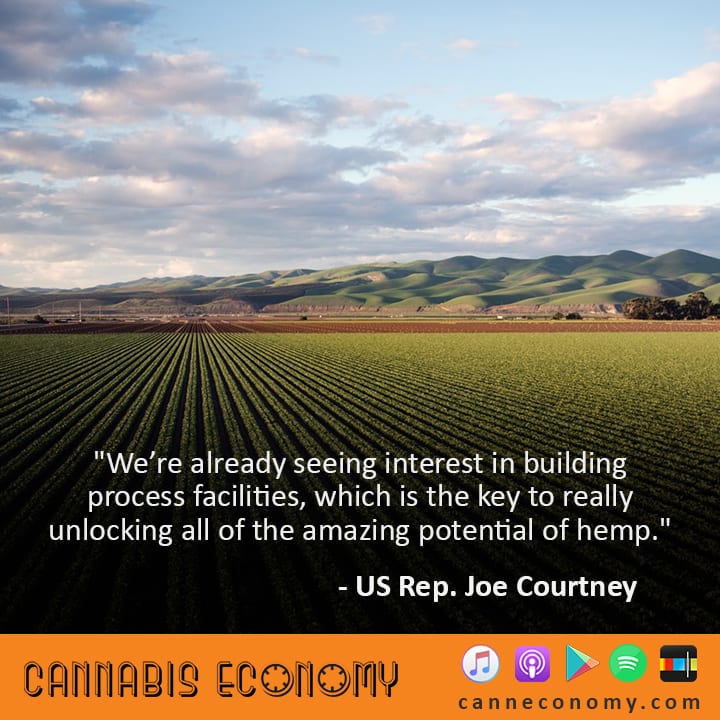Cannabinoid Receptor Type 1 and Cannabinoid Receptor Type 2 (more familiarly known as the CB1 and CB2 receptors) are two of the body’s major cannabinoid receptors, which are integral to the endogenous cannabinoid system as a whole. The CB1 receptor was …
OVERVIEW In 2017, the National Academies of Science, Engineering & Medicine released a comprehensive report, “The Health Effects of Cannabis & Cannabinoids”, based on the research that had been done to date. Following that valuable report, we’v …
Virodhamine (also known as O-arachidonoyl ethanolamine or O-AEA) was discovered in 2002 by Porter et al. Virodhamine is one of the body’s many endocannabinoids and is a combination of arachidonic acid and ethanolamine. These two components are formed b …
OVERVIEW In 2017, the National Academies of Science, Engineering & Medicine released a comprehensive report, “The Health Effects of Cannabis & Cannabinoids”, based on the research that had been done to date. Following that valuable report, we’v …
N-Arachidonoyl dopamine (NADA) is an endogenous cannabinoid that acts as a potent agonist to the body’s CB1 and TRPV1 receptors. NADA was one of the later discovered endocannabinoids, along with 2-AGE and virhodamine. NADA was first proposed as an endo …
OVERVIEW In 2017, the National Academies of Science, Engineering & Medicine released a comprehensive report, “The Health Effects of Cannabis & Cannabinoids”, based on the research that had been done to date. Following that valuable report, we’v …
2-Arachidonyl glyceryl ether, often referred to as noladin ether or 2-AGE, is a stable analog of the endogenous cannabinoid 2-AG. It was discovered in 2000 by Lumír Hanuš and his colleagues (Saleh Abu-Lafi, Ester Fride, Aviva Breuer, Zvi Vogel, Deborah …
OVERVIEW In 2017, the National Academies of Science, Engineering & Medicine released a comprehensive report, “The Health Effects of Cannabis & Cannabinoids”, based on the research that had been done to date. Following that valuable report, we’v …
OVERVIEW In 2017, the National Academies of Science, Engineering & Medicine released a comprehensive report, “The Health Effects of Cannabis & Cannabinoids”, based on the research that had been done to date. Following that valuable report, we’v …
2-Arachidonoylglycerol (2-AG) is an endogenous cannabinoid – one of many naturally occurring cannabinoids produced by the mammalian body (2-AG has even been found in cow’s milk and human breast milk.) 2-AG was the second endocannabinoid to be discovere …
OVERVIEW In 2017, the National Academies of Science, Engineering & Medicine released a comprehensive report, “The Health Effects of Cannabis & Cannabinoids”, based on the research that had been done to date. Following that valuable report, we’v …
N-Arachidonylethanolamine (familiarly known as anandamide, or AEA) was discovered in 1992 by Dr. Raphael Mechoulam and his team. Anandamide is an endogenous cannabinoid, which means that it is produced by the body rather than by the cannabis plant – an …
Episode 445 – U.S. Congresswoman Eleanor Holmes Norton “The fact is that across this United States, the final verdict is in. So, Congress should just catch up. The police have caught up. You won’t find the police arresting people unless it’s out in the …
Housing – U.S. Congressman Ro Khanna “Currently, rent control ordinances allow little security for renters. I’d like to repeal some of those laws, because our communities need reasonable rent control for its middle-class workers. We’re also working wit …
Besides THC, Cannabidiol (CBD) is cannabis’s other most studied and well-known cannabinoid. However, unlike THC, CBD is not psychoactive; consuming pure CBD does not produce the same “high” feeling that THC does. CBD was discovered in 1940 and is just …
OVERVIEW In 2017, the National Academies of Science, Engineering & Medicine released a comprehensive report, “The Health Effects of Cannabis & Cannabinoids”, based on the research that had been done to date. Following that valuable report, we’v …
Cannabitriol (CBT) is one of the minor cannabinoids found in the cannabis plant. CBT was first discovered in 1966 by Obata and Ishikawa, but its chemical structure was later determined by researchers in 1976. As of now, there are nine known types of CB …
OVERVIEW In 2017, the National Academies of Science, Engineering & Medicine released a comprehensive report, “The Health Effects of Cannabis & Cannabinoids”, based on the research that had been done to date. Following that valuable report, we’v …

OVERVIEW In 2017, the National Academies of Science, Engineering & Medicine released a comprehensive report, “The Health Effects of Cannabis & Cannabinoids”, based on the research that had been done to date. Following that valuable report, we’v …

Cannabielsoin (CBE) is one of the non-psychoactive cannabinoids found in the cannabis plant. CBE was first mentioned in scientific literature in 1973 but with no information about the cannabinoid’s structure. Its structure was eventually established a …

Cannabicyclol (CBL) is a non-psychoactive cannabinoid found within the cannabis plant. It was discovered in 1964 by Korte and Sieper. Originally, they thought it resembled THC and was thus aptly named THC III. In 1967 the cannabinoid was isolated, give …
OVERVIEW In 2017, the National Academies of Science, Engineering & Medicine released a comprehensive report, “The Health Effects of Cannabis & Cannabinoids”, based on the research that had been done to date. Following that valuable report, we’v …
Cannabinol (CBN) is one of the many cannabinoids found in the cannabis plant. Unlike CBD or CBG, CBN has psychoactive properties (however, quite mild compared to those of THC.) It is a partial agonist for CB1 receptors, but more so for CB2 receptors. U …
OVERVIEW Cannabis’ current regulation in the United States, as well as around the world, limits the vast research needed to educate the public about its advantages. These findings sought to provide medical evidence of cannabis’ benefits and risks in ca …
The cannabinoid acids are the precursor cannabinoids that eventually produce the active, non-acidic cannabinoids (CBG, THC, CBD, etc.) When the cannabis plant is still growing, cannabinoids typically exist only in their acidic forms. Only after the dec …
OVERVIEW Cannabis’ current regulation in the United States, as well as around the world, limits the vast research needed to educate the public about its advantages. These findings sought to provide medical evidence of cannabis’ benefits and risks in ca …
CBC CANNABINOID Cannabichromene (CBC) was discovered in 1966 by Dr. Raphael Mechoulam and Y. Gaoni, and then almost simultaneously by Dr. Claussen and his team that same year. CBC is considered to be one of the most abundant naturally occurring cannabi …
OVERVIEW Cannabis’ current regulation in the United States, as well as around the world, limits the vast research needed to educate the public about its advantages. These findings sought to provide medical evidence of cannabis’ benefits and risks in ca …
Cannabigerol (CBG) was discovered in 1964 and is one of the many cannabinoids found in the cannabis plant. Most of the CBG produced by the plant eventually converts into other cannabinoids, like THC or CBD. Because of this, CBG is considered the “mothe …
Cannabis Economy Digital Workshop Post-Show Report The initial Cannabis Economy Digital Workshop took place July 30-31, 2019. Each day we had 15 straight hours of content resulting in 38 sessions from Science, Policy and Business leaders. Thank you to …
Many people can tell you that they’ve at least heard of THC, but most would struggle to thoroughly describe it. Indeed, THC is famous for a good reason: it is cannabis’s primary psychoactive component and was the first cannabinoid to be discovered by m …
Q2 Column Highlights: Biography – Dr. Sharon Sznitman Everyone can learn from the sociological angle. But a sense of alienation makes it possible to discern more clearly how society shapes our personal lives. Instead of looking only at the possi …
Q2 Podcast Highlights: Episode 419 – Adam Bierman, MedMen There’s never been a more exciting time to be in the cannabis industry than 2019. And there won’t be a more exciting time to be in the cannabis industry than 2020 when we get there as wel …
I’ve always been in favor of letting people live their own lives. In this case, we were able to not just talk about legalizing cannabis, but legalizing…

Cannabis activism in the ‘90s [was] a different time and place. Cops arrested people constantly. The Department of Justice targeted people…

Cannabis’ current regulation in the United States, as well as around the world, limits the vast research needed to educate the public about its advantages.
